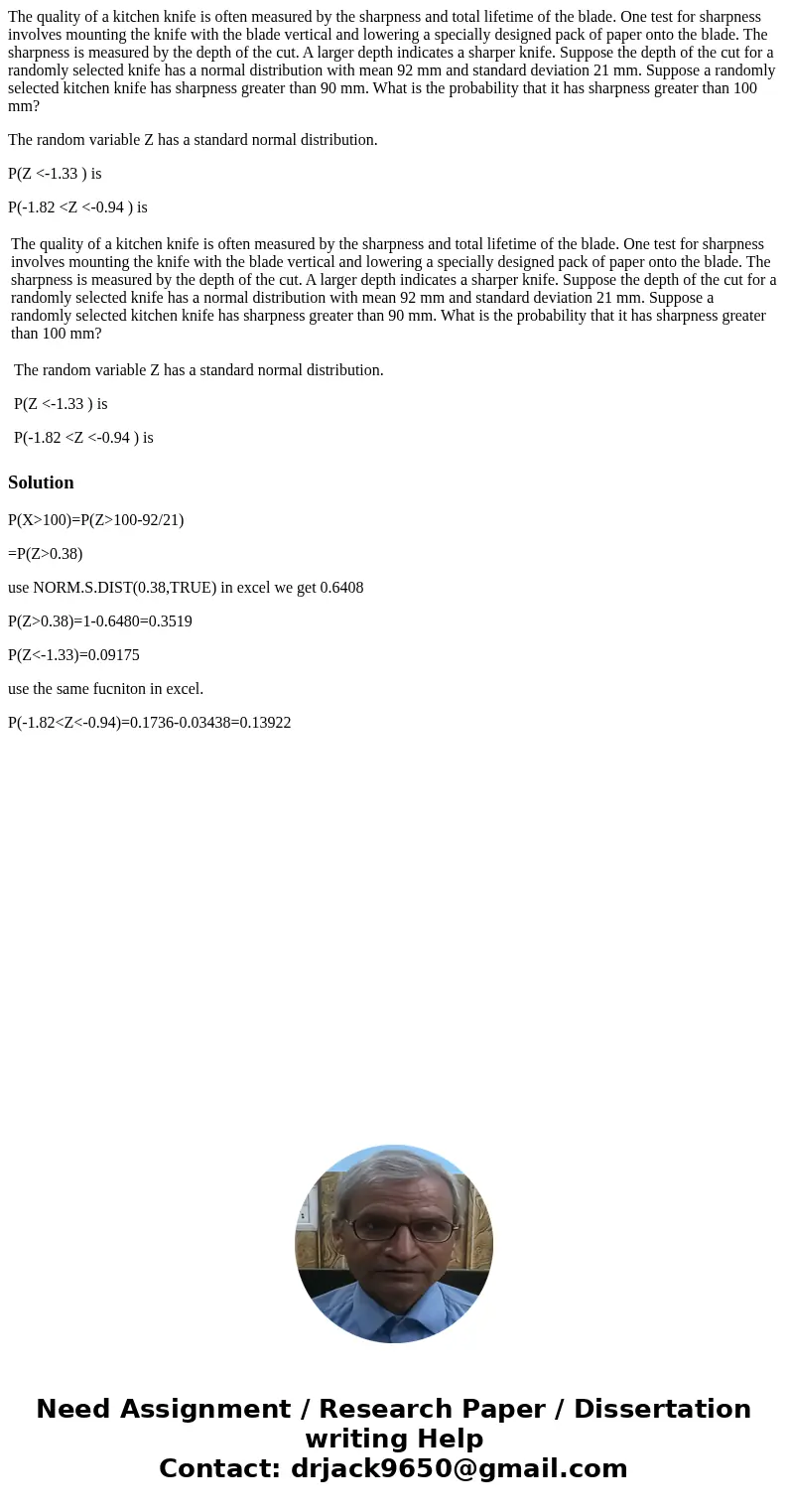The quality of a kitchen knife is often measured by the shar
The quality of a kitchen knife is often measured by the sharpness and total lifetime of the blade. One test for sharpness involves mounting the knife with the blade vertical and lowering a specially designed pack of paper onto the blade. The sharpness is measured by the depth of the cut. A larger depth indicates a sharper knife. Suppose the depth of the cut for a randomly selected knife has a normal distribution with mean 92 mm and standard deviation 21 mm. Suppose a randomly selected kitchen knife has sharpness greater than 90 mm. What is the probability that it has sharpness greater than 100 mm?
The random variable Z has a standard normal distribution.
P(Z <-1.33 ) is
P(-1.82 <Z <-0.94 ) is
| The quality of a kitchen knife is often measured by the sharpness and total lifetime of the blade. One test for sharpness involves mounting the knife with the blade vertical and lowering a specially designed pack of paper onto the blade. The sharpness is measured by the depth of the cut. A larger depth indicates a sharper knife. Suppose the depth of the cut for a randomly selected knife has a normal distribution with mean 92 mm and standard deviation 21 mm. Suppose a randomly selected kitchen knife has sharpness greater than 90 mm. What is the probability that it has sharpness greater than 100 mm?
|
Solution
P(X>100)=P(Z>100-92/21)
=P(Z>0.38)
use NORM.S.DIST(0.38,TRUE) in excel we get 0.6408
P(Z>0.38)=1-0.6480=0.3519
P(Z<-1.33)=0.09175
use the same fucniton in excel.
P(-1.82<Z<-0.94)=0.1736-0.03438=0.13922

 Homework Sourse
Homework Sourse